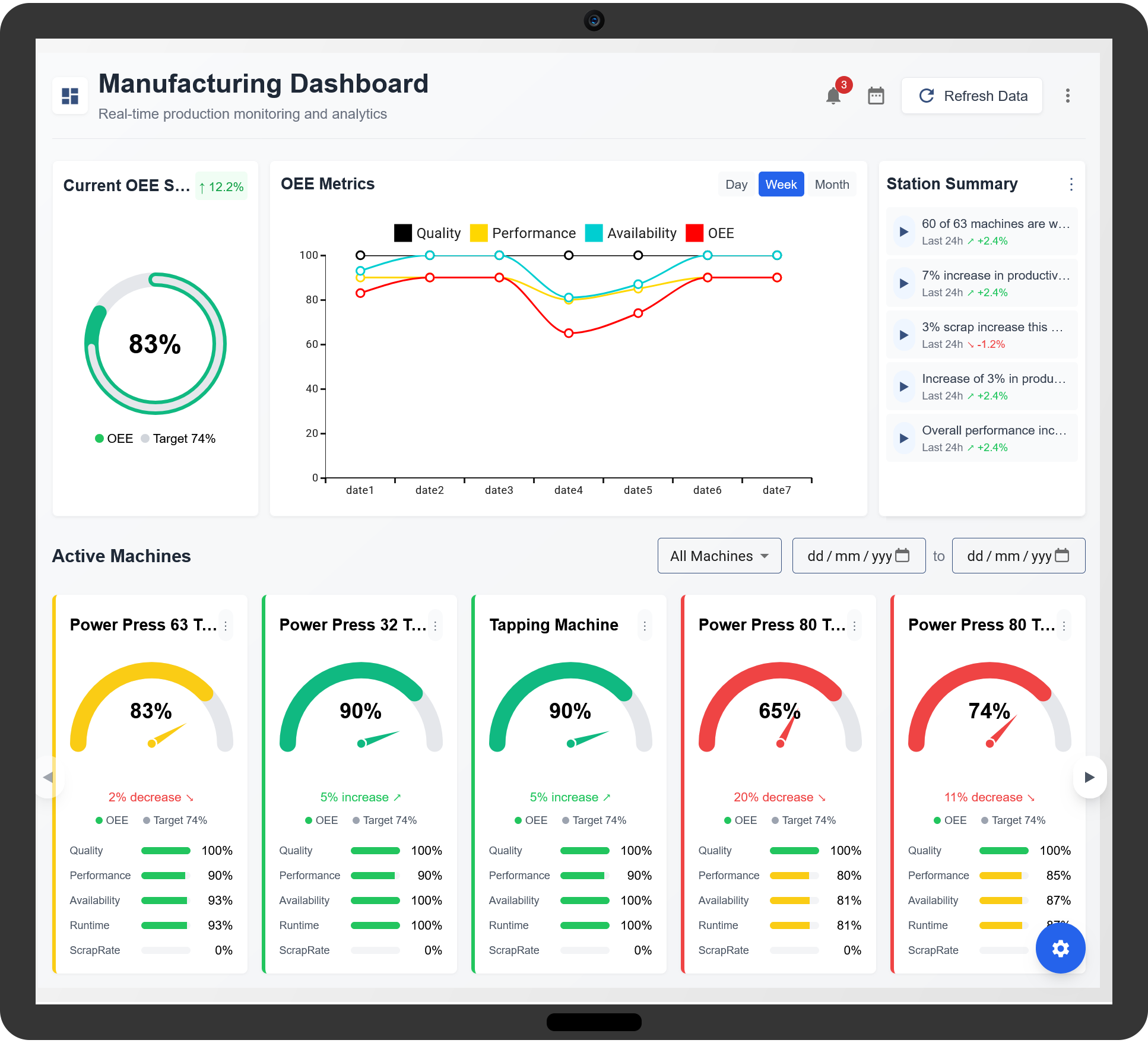Overall Equipment Effectiveness (OEE) is a key performance metric in oil and gas manufacturing, measuring the efficiency and productivity of equipment. By analyzing OEE, businesses can optimize operations, reduce downtime, and maximize output.

1. Key Components of OEE in Oil and Gas
- Availability: Measures the percentage of time equipment is operational compared to planned production time.
- Performance: Assesses whether equipment is running at optimal speed without slowdowns.
- Quality: Evaluates the proportion of defect-free output compared to total production.
2. How to Improve OEE in Oil and Gas Manufacturing
Step 1: Identify Downtime Causes
Analyze equipment logs to determine the primary reasons for unplanned downtime and implement corrective measures.
Step 2: Optimize Equipment Performance
Regular maintenance and real-time monitoring can help improve performance by minimizing slowdowns and inefficiencies.
Step 3: Enhance Product Quality
Implement quality control measures and automated inspections to reduce defects and increase overall production quality.
Step 4: Train Personnel on Best Practices
Ensure that operators and technicians are well-trained in equipment handling and preventive maintenance strategies.
Step 5: Use Data Analytics for Continuous Improvement
Leverage data-driven insights to identify patterns, predict failures, and continuously refine manufacturing processes.
3. Benefits of Implementing OEE in Oil and Gas
- Increased Equipment Utilization: Maximizes the operational efficiency of machinery.
- Reduced Downtime: Identifies and mitigates causes of production delays.
- Higher Production Output: Ensures machines operate at peak efficiency.
- Improved Product Quality: Reduces defects and enhances consistency.
- Enhanced Safety: Reduces risks associated with equipment failure.
4. Future of OEE in Oil and Gas Manufacturing
With advancements in automation and IoT technology, OEE in oil and gas will continue to evolve, incorporating predictive maintenance and AI-driven analytics for more precise operational control.
By optimizing OEE, oil and gas manufacturers can achieve higher productivity, reduce costs, and ensure a more sustainable production process.
OEE in Oil and Gas Manufacturing
What is OEE in oil and gas manufacturing?
OEE (Overall Equipment Effectiveness) is a key metric used to measure the efficiency of equipment in oil and gas operations by assessing availability, performance, and quality.
Why is OEE important in the oil and gas industry?
OEE helps companies monitor and improve equipment performance, minimize downtime, and enhance overall production efficiency.
How is OEE calculated in oil and gas manufacturing?
OEE is calculated as Availability × Performance × Quality, where each factor represents a different aspect of operational efficiency.
What factors impact OEE in oil and gas operations?
Factors such as unplanned downtime, slow production rates, equipment failures, quality defects, and maintenance delays affect OEE.
How does OEE help reduce downtime in oil and gas plants?
OEE identifies inefficiencies, allowing teams to implement preventive maintenance and process improvements to minimize downtime.
What are the common challenges in implementing OEE?
Challenges include data collection accuracy, system integration, change resistance, and the complexity of measuring OEE in dynamic environments.
How can OEE improve asset utilization in oil and gas?
By identifying idle or underperforming equipment, OEE helps optimize usage and maximize asset productivity.
Can OEE be integrated with maintenance management?
Yes, OEE can be linked to maintenance systems to schedule preventive repairs and track equipment performance.
How does OEE support predictive maintenance?
By analyzing real-time equipment data, OEE helps predict failures and optimize maintenance schedules.
What role does OEE play in production efficiency?
OEE identifies process bottlenecks, reduces waste, and improves production flow, leading to higher efficiency.
How does OEE contribute to cost reduction?
OEE lowers costs by improving productivity, reducing waste, and minimizing equipment failures and downtime.
Can OEE improve safety in oil and gas operations?
Yes, by reducing equipment malfunctions and optimizing maintenance, OEE enhances workplace safety.
What impact does automation have on OEE?
Automation enhances OEE by improving precision, reducing human errors, and enabling real-time monitoring.
What are the best practices for improving OEE?
Best practices include regular maintenance, accurate data tracking, staff training, and process optimization.
Is OEE suitable for both upstream and downstream operations?
Yes, OEE applies to both upstream extraction and downstream refining and processing operations.